As a motorcycle enthusiast, it is essential to understand the various components that make up your beloved two-wheeled machine.
Among these components, the valves play a crucial role in the overall performance of your motorcycle’s engine.
In this article, we will delve into the topic of valve motorcycle adjustment and explore the process in a simplified manner.
What Are Valve Motorcycles?
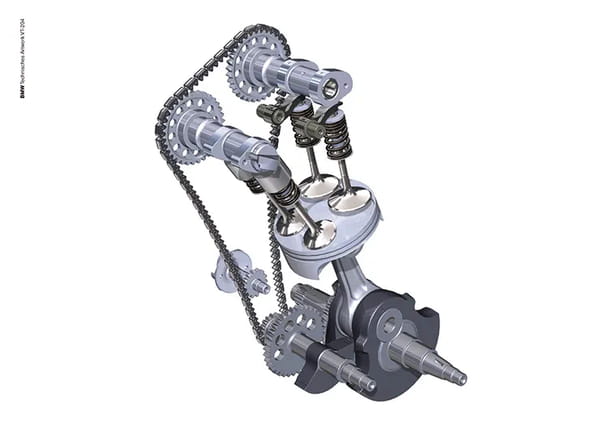
Valve motorcycles, also known as four-valve motorcycles, are a type of engine configuration commonly found in modern motorcycles.
Unlike older designs that typically featured two valves per cylinder, four-valve motorcycles utilize four valves per cylinder – two intake valves and two exhaust valves.
This configuration allows for improved airflow, resulting in enhanced power output and better fuel efficiency.
Signs Your Motorcycle Needs a Valve Adjustment

It is vital to be aware of the signs indicating that your motorcycle’s valves may need adjustment. Some common symptoms include:
Difficulty starting the engine: If your motorcycle is struggling to start or requires excessive cranking, it could be a sign that the valves need adjustment.
Decreased performance: A loss in power or a decrease in overall performance can be an indication of improperly adjusted valves.
Rough idling: If your motorcycle’s engine is idling roughly or experiencing inconsistent RPMs, it might be time for a valve adjustment.
Increased fuel consumption: Valves that are out of adjustment can lead to poor fuel economy, causing you to make more frequent trips to the gas station.
Motorcycle Valve Adjustment Tools
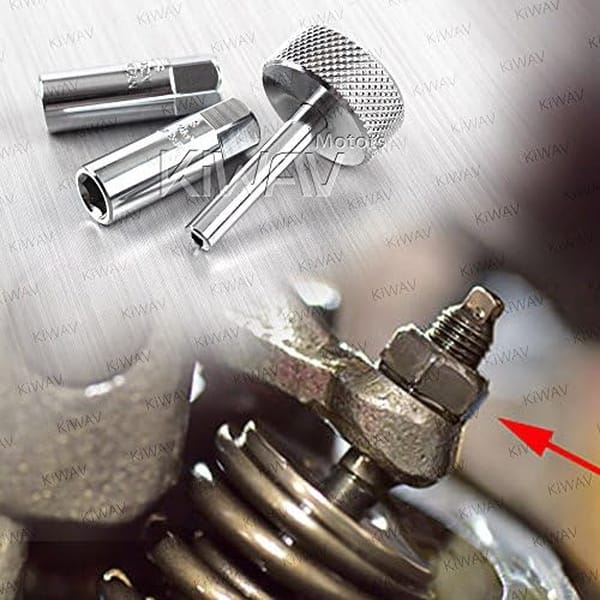
Before diving into the valve adjustment process, it is crucial to gather the necessary tools. Here are some common tools required for a motorcycle valve adjustment:
Feeler gauges: These thin, metal strips are used to measure the valve clearances accurately.
Wrenches and sockets: Depending on your specific motorcycle model, you will need a set of wrenches and sockets to loosen and adjust the valve components.
Screwdriver: A screwdriver will come in handy for loosening and tightening specific valve adjustment screws.
Service manual: It is highly recommended to refer to your motorcycle’s service manual, which provides detailed instructions specific to your make and model.
How To Adjust Valves on a Motorcycle
Now, let’s walk through the simplified process of adjusting valves on a motorcycle:
1. Preparation
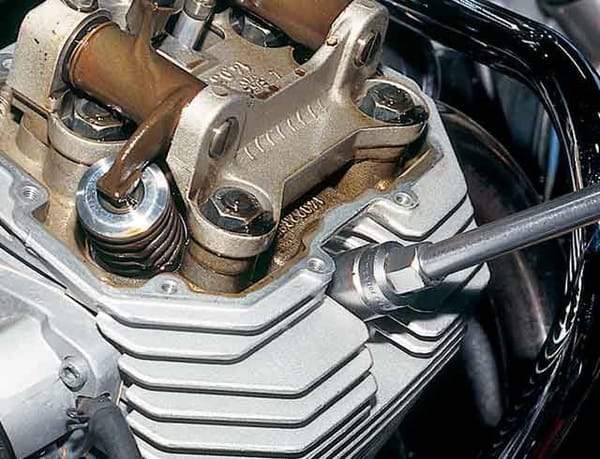
Start by ensuring your motorcycle is on a flat surface and the engine is cool. Remove any necessary fairings or covers to access the valves.
2. Locate the valve covers
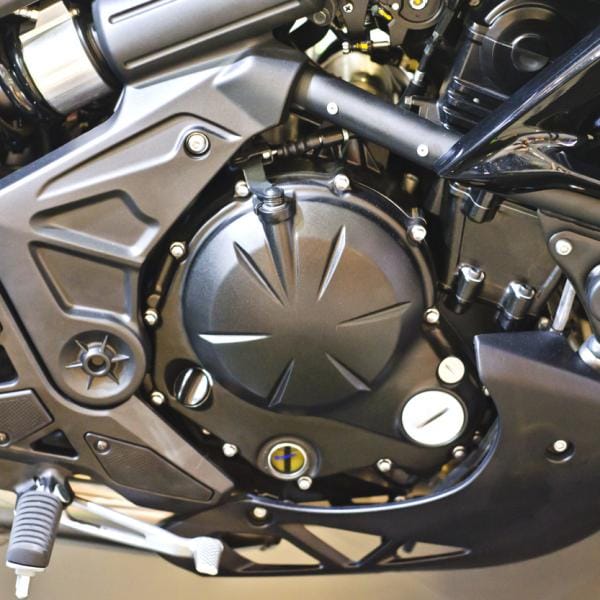
The valve covers are typically situated on the top of the engine and can be identified as a separate housing.
3. Remove the valve covers

Carefully remove the valve covers using the appropriate wrench or socket, taking care not to damage any gaskets or seals.
4. Identify the valve adjustment screws
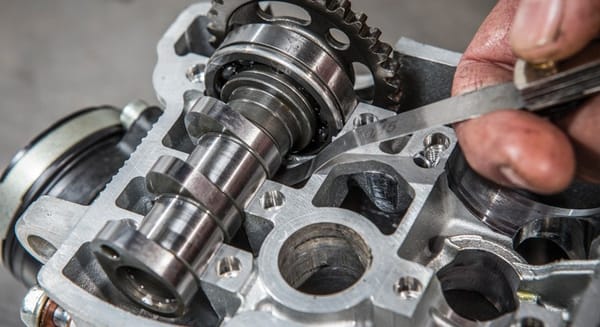
Locate the valve adjustment screws, which are typically situated on top of the valve stems.
5. Check the valve clearances

Insert the appropriate feeler gauge between the valve stem and the corresponding rocker arm. Ensure that there is a slight drag when moving the feeler gauge, indicating the correct valve clearance.
Refer to your service manual for the specific clearance values required for your motorcycle.
6. Adjust the valve clearance

Loosen the lock nut on the valve adjustment screw and use a screwdriver to turn the adjustment screw until the desired clearance is achieved. Once adjusted, tighten the lock nut to secure the setting.
7. Repeat the process

Follow steps 5 and 6 for all valves on your motorcycle, ensuring that each valve has the correct clearance.
8. Reassemble

After adjusting all the valves, reinstall the valve covers, ensuring a proper seal. Replace any removed fairings or covers.
Conclusion
Proper valve adjustment is crucial for maintaining optimal engine performance and longevity.
By paying attention to the signs indicating the need for a valve adjustment and following the simplified steps outlined in this article, you can confidently adjust the valves on your motorcycle.
Remember to refer to your motorcycle’s service manual for specific instructions and clearance values, as they may vary depending on the make and model.
Regular valve maintenance will keep your motorcycle running smoothly and ensure many more exhilarating rides ahead.
FAQ
Why Checking Out Your Bike’s Valve Clearance is Important?
The importance of checking your bike’s valve clearance:
Engine Performance: Proper valve clearance ensures optimal engine performance, with improved power, fuel efficiency, and acceleration.
Engine Longevity: Checking and adjusting valve clearance prevents damage to the engine, ensuring longevity and reliability.
Preventing Valve Damage: Incorrect valve clearance can lead to valve-to-piston interference, causing expensive repairs. Regular checks prevent this issue.
Quieter Operation: Properly adjusted valve clearance reduces noise, providing a quieter and more enjoyable ride.
Remember to consult your motorcycle’s service manual for specific clearance values and seek professional help if needed. Regular valve clearance checks will keep your bike running smoothly and extend its lifespan.
When To Do Motorcycle Valve Adjustment?
Perform valve adjustments on your motorcycle based on the manufacturer’s recommendations in the owner’s or service manual.
Generally, it is done every 10,000 to 20,000 miles (16,000 to 32,000 kilometers) or every 1 to 2 years. Look out for signs of valve clearance issues like starting difficulties, decreased performance, rough idling, or increased fuel consumption.
High-performance engines or extreme riding conditions may require more frequent adjustments. Following these guidelines ensures optimal engine performance and longevity.
How Often Valve Adjustment Motorcycle?
The frequency of motorcycle valve adjustments varies depending on the make and model. As a general guideline, it is recommended to perform a valve adjustment every 10,000 to 20,000 miles (16,000 to 32,000 kilometers) or every 1 to 2 years.
Factors such as the manufacturer’s recommendations and riding conditions can influence the frequency. It’s important to consult the owner’s manual or service manual for specific guidelines.
Regular valve adjustments help maintain optimal engine performance and prevent potential damage.
Originally posted 2023-07-05 14:39:03.
